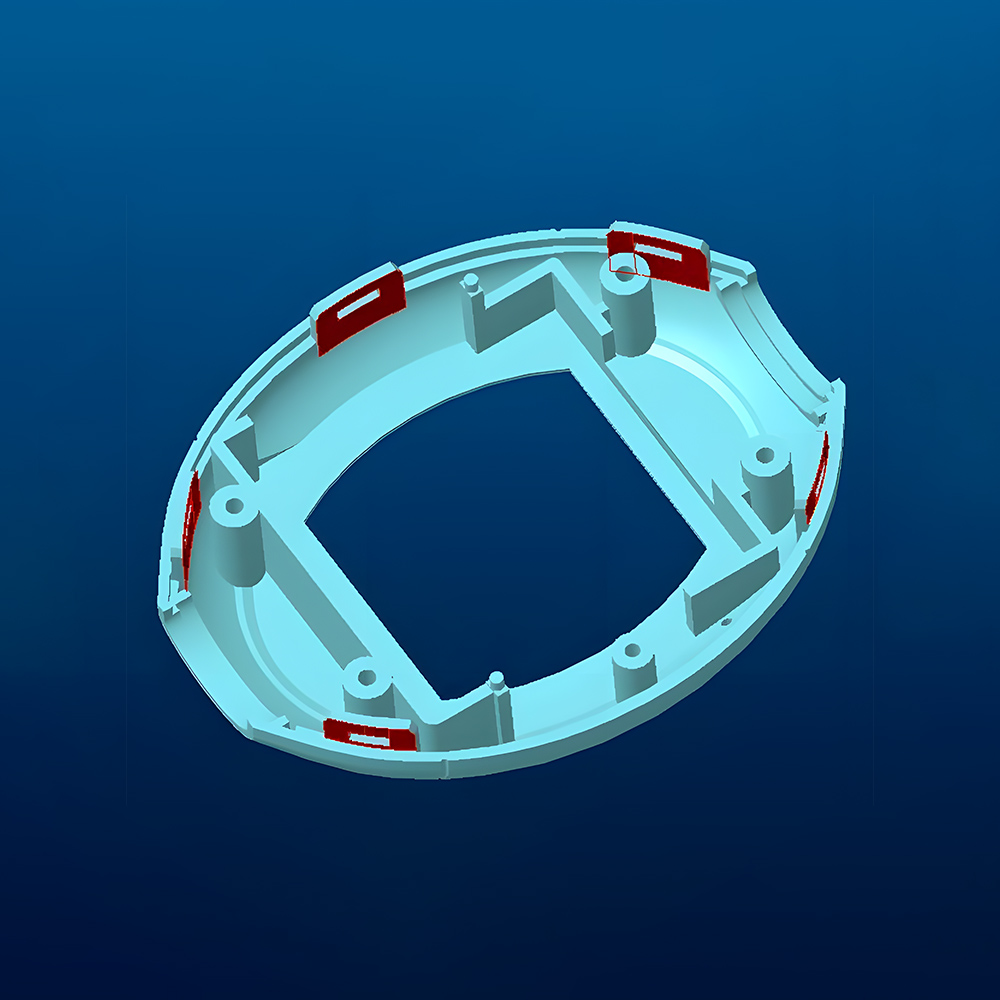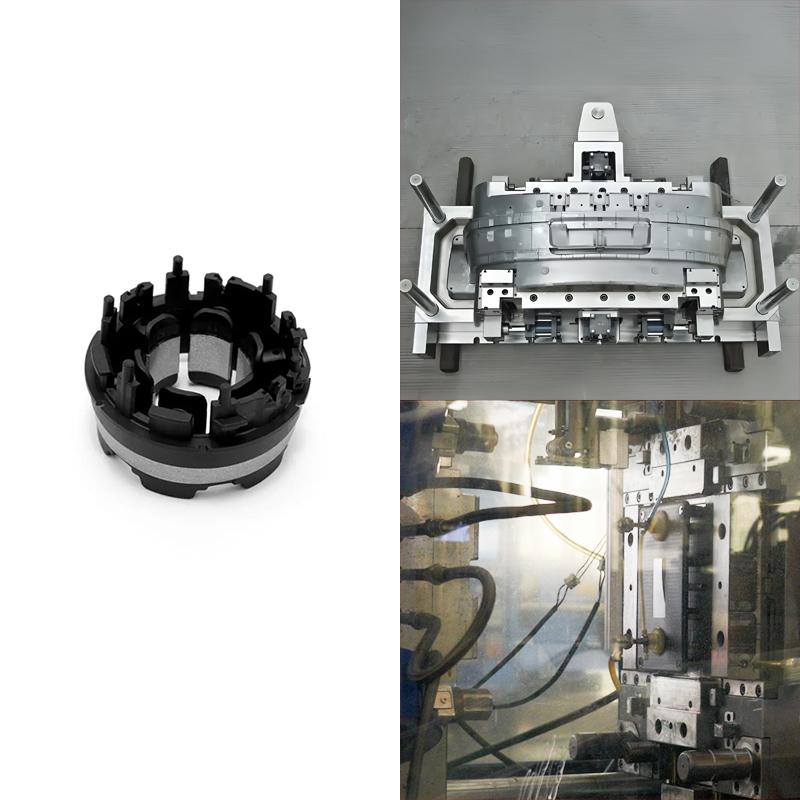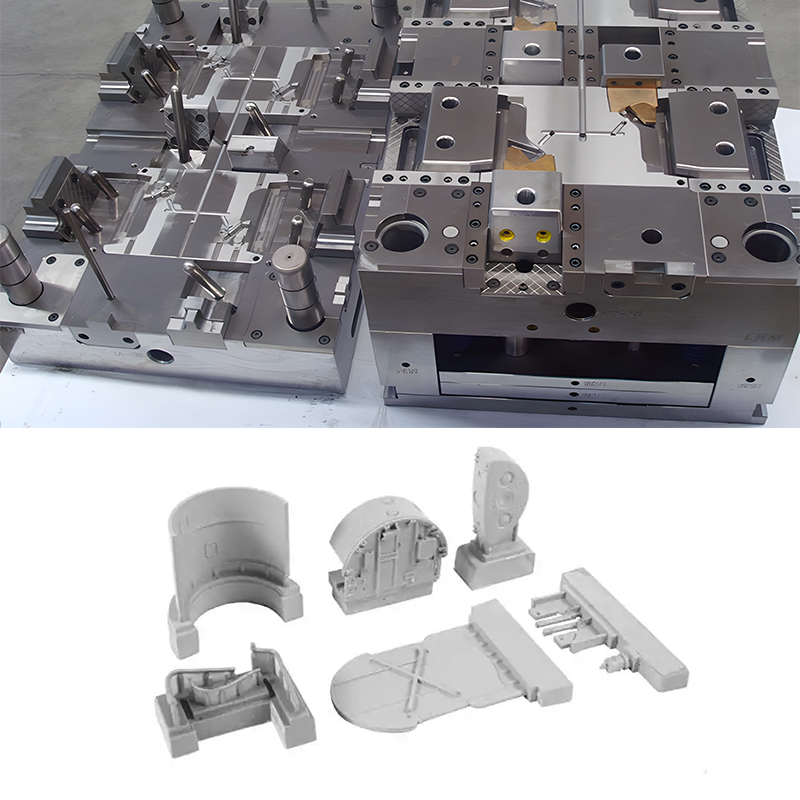Have you ever tried to pull a stubborn kid out of a tight space? That is like what undercuts are in the molding process. Undercuts refer to features in a part that prevent the straightforward removal of the part from the mold. Their features include the geometry that locks the part into the mold, making it difficult to eject them without using additional mechanisms such as a slider, lifter, or hand-loaded insert. These features significantly affect the mold’s complexity and overall process. Think of them as the villain production story by recognizing the presence and implications of undercuts early in the engineering design process. Then, you will avoid costly redesigns and production delays. While undercuts in product design can be a headache to engineering designers and manufacturers, they can be cool when done right.
For product designers, a thorough understanding of undercuts is paramount to ensure the successful translation of their concepts into tangible products.
This article will explore the complexities of undercuts in greater detail. Moreover, it comprehensively guides designers in understanding and mastering undercuts in product design.

Why Are Undercuts In Product Design Useful?
You might question the value of undercuts in design, considering the system impacts they bring and if the benefits truly outweigh the drawbacks. For product designers, undercuts are like a secret sauce to making their dreams a reality. Some common reasons why undercuts are essential.
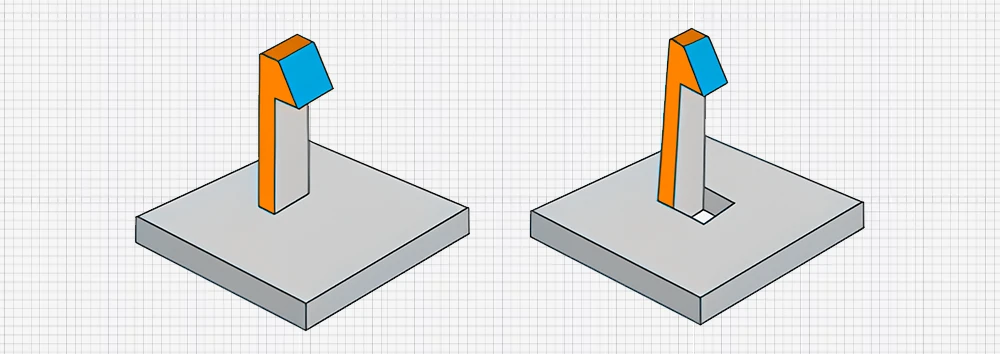
Snap-Fits and Clips
The interlocking parts create a secure connection without additional fasteners. They are like puzzle pieces of product assembly. Undercuts in design play an important role in making these features.
Barb Connectors
Barb connectors feature small protrusions that create seals when inserted into the tubing. These designs eliminate the need for adhesives and clamps, thereby reducing potential leak points. Plastic barb fittings are indispensable for many devices in the medical field.
Side Holes And Ports
These elements offer access points for components within a product. The holes accommodate speakers, buttons, and other elements. Most common in electronics consumer products.
Inserts
Inserts customize product design by allowing the integration of specialized features that would not be possible through traditional molding techniques. Inserts can be made from different materials like plastics, metals, or rubber. Incorporation is usually done before the molten plastic is injected.
Vertical Threads
Vertical threads are typically molded into the plastic. Essentially, they make reliable and secure connections for various applications. Common in hoses, connectors, and other parts that need a robust, load-bearing interface.
Core Outs
They address potential issues due to thick sections in plastic injection molding. Core outs improve the overall quality of the finished product by carefully removing material from the interior of a part to help eliminate sink marks and warping.
Designing Undercuts
1. Simplify the Design
Design complexity is a critical factor influencing the manufacturing process. Overly complex designs frequently result in higher production costs, longer lead times, and difficulties during manufacturing. To address these problems, designers should put simplicity and usefulness first.
Simplified designs not only facilitate easier manufacturing but also enhance the reliability and performance of the product. By minimizing unnecessary complexities, potential problems occurring during production are avoided, and the possibility of defects is lowered.
Tooling constraints must also be taken into consideration. While complex designs can be produced through techniques like side actions or collapsible cores, they also add time and expense to the production process. Product designers must determine whether the advantages of these intricate features outweigh the extra costs and difficulties.
2. Incorporate Draft Angles.
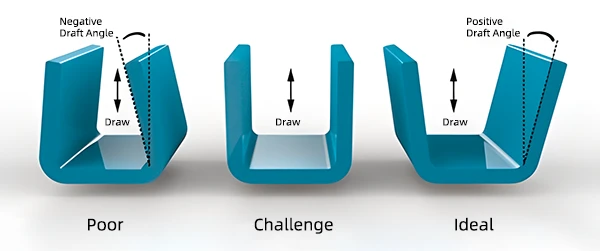
Draft angles are essential to ensure a part is ejected from a mold smoothly and effectively. A draft angle of 1-2 degrees is often recommended. There are a few things to take into account when designing a draft angle.
Surface finish is crucial since it affects the needed draft angle. Larger draft angles are frequently required to preserve the intended aesthetics in parts with high-gloss or textured finishes.
Part geometry necessitates the adjustment of the draft angle. Internal features may require a different angle as compared to external features.
Manufacturing processes such as injection molding or die-casting dictate ideal draft angle ranges.
3. Manage Tolerance and Fit
Tolerance and fit are paramount to guarantee the reliability and functionality of parts, particularly those with undercuts. Product designers must carefully consider the cumulative effect of tolerances across several components. Thorough comprehension of tolerance stack-up analysis helps to identify potential assembly problems early in the design process.
To ensure that parts meet tolerance requirements, thorough inspection, and quality control procedures are essential. The precision required for this activity is provided by sophisticated measuring instruments such as Coordinate Measuring Machines (CMMs).
When determining tolerance, material behavior is as important. Different materials deform to varying degrees when subjected to stress and load. To guarantee correct fit and performance throughout the product’s lifecycle, these features must be taken into account.
4. Parting Line Considerations
The parting line is the critical interface where the two halves of a mold join. The designers should design with the parting line in mind. Its positioning has a big impact on the production process and the appearance of the finished product. Features should ideally line up with the parting line to reduce undercuts and make mold construction easier. However, detailed designs can be made possible by complex geometries that require several separating lines, which increases mold complexity.
5. Select Appropriate Materials
The appropriate choice of material as a designer is pivotal in the successful execution of undercut design. Select materials that can endure the strains and alterations that undercuts may cause. Strong metals like stainless steel or aluminum or durable plastics like (ABS and polycarbonate) are frequently appropriate. Strike a balance between the cost and material performance. High-performance materials can cost more even when they have better qualities. Consider whether the advantages outweigh the extra expense for your particular use case.
6. Utilize Iterative Prototyping
Iterative prototyping is a cornerstone of successful product development. It is useful for improving intricate undercut designs. Designers can test numerous versions rapidly and economically by using fast prototyping techniques such as 3D printing. This accelerated process enables the early identification and resolution of potential issues. Additionally, it enables modifications and feedback, guaranteeing that the design satisfies manufacturing and functional requirements. This iterative approach greatly reduces the risk of costly design flaws and delays. It leads to a product that is more market-ready.
Undercut Challenges in Product Design.
Product designers need to understand the impact of undercuts on their products to ensure accurate design. This understanding will improve the molding process and reduce potential problems.
- Design for Assembly (DFA) Challenges: Undercuts often pose significant challenges in product assembly. Their presence may cause complexities in typical assembly procedures, necessitating extra stages or specific tools.
- Potential for Part Distortion: Undercuts, particularly intricate ones, can significantly impact part integrity. Undercuts have the potential to cause uneven cooling rates during the molding process. This difference frequently distorts the part. To mitigate this issue, careful consideration of undercut design geometry is important.
- Design Constraints: Undercuts can significantly constrain design freedom by limiting the ability to incorporate desired features. Moreover, they often necessitate compromises in size, shape, and feature placement.
- Assembly Difficulties: Undercuts often complicate the assembly process. The force needed to align parts increases the chance of part damage as well. Careful design considerations and possibly additional assembly aids are necessary to guarantee effective and damage-free assembly.
- Cost Implications: Undercutting often causes complexity, which raises production costs because of labor, tooling, and other additional operations. Effective undercut implementation and possible cost-cutting design strategies must be carefully considered to preserve profitability.
Overcoming Undercut Challenges
Avoid Undercuts When Possible:
Removing unnecessary details can significantly reduce the likelihood of undercuts. It’s practical to produce useful and appealing products without using undercuts by carefully evaluating design decisions. Small modifications to a part’s geometry and exploring different shapes can often eliminate the need for undercuts.
Communicate Clearly with Mold Designers:
Product designers, mold designers, and manufacturing engineers must collaborate early for successful product development. It facilitates the early detection of possible undercut problems and the creation of workable remedies. Designers can expedite the mold design process by offering comprehensive product information, including drawings(2D&3D) and possible challenges. Similarly, being receptive to feedback from mold designers can result in design improvements and cost savings.
Undercut Tolerances:
Striking the right balance between aesthetic requirements and functional needs is essential. While a tighter tolerance might improve item performance, it also frequently increases production costs and complexity. On the other hand, while wider tolerances may result in performance compromise, they reduce production difficulties.
Design Alternatives:
Often, reorienting or changing the geometry of a part becomes a workable solution when undercuts are present. By altering the part’s orientation within the mold, undercuts can potentially be transformed into draft angles. Modification of the part’s shape, like introducing radii to sharp corners or adjusting surrounding features, can mitigate the severity of undercuts. However, careful consideration of factors such as assembly processes, and the part’s center of gravity is essential. Successful implementation of these design alternatives depends on close collaboration with manufacturing engineers to assess their practicality.
Leveraging CAD Software for Undercut Identification:
CAD software is now an essential tool for product designers in addressing the challenges posed by undercuts. Designers can see their work from every angle by building elaborate 3D models, which helps them see possible undercut problems early in the process. Advanced tools like draft analysis, mold simulation, and interference checks are expressly intended to identify undercut issues and are available in modern CAD software. Additionally, CAD software makes it easier for designers and industrial engineers to collaborate seamlessly. Teams can effectively detect and fix undercut concerns by cooperating and exchanging digital models.
The Invaluable Role of Expert Consultation:
Engaging with experienced mold makers or manufacturing engineers is a cornerstone of successful product development. These professionals have extensive knowledge of material qualities, manufacturing procedures, and the subtleties of mold design. Their expertise can help see any problems in the early stages of design and create workable solutions.
From Concept to Reality: How Undercuts Enhance Everyday Products
1. Consumer Electronics
Many electrical appliances have a plastic housing since they are durable, insulated, and economical. This housing requires the presence of undercuts to allow access to the internal part or to place buttons and switches for the end user. For aesthetically pleasing items, secondary operations are not preferable. For example, when manufacturing a mobile phone, the designer has to consider the functionality and visual appearance.
2. Medical Devices
Undercuts are most commonly used in medical equipment. This is because this equipment has some complex designs to fulfill their purposes. Special devices such life- saving devices, and oxygen delivery units have complicated designs because of the risks involved when using them. In this case, undercutting helps designers get part manufacturability without compromising their performance.
3. Design Requirements
Designers need to adhere to specific element requirements while designing undercuts. The feature must fit in and be easily removed. Side actions should d be lightly joined to avoid the risk of them getting stuck.
4. Automotive Industry
Undercuts allow the creation of automotive components with enhanced functionality and aesthetics. Undercuts form the intricate geometries for threads in screws for joining the interiors of the car. Also, the seals and gaskets of complex shapes ensure proper sealing of engine components.
5 Packaging
By incorporating undercuts, packaging manufacturers can produce containers that are not only functional but also aesthetically pleasing and consumer-friendly. Undercut injection molding is a critical procedure in the manufacture of complex components. Manufacturers can create packaging solutions that satisfy contemporary consumers.
Conclusion
Undercuts in product design can be tricky, but they’re often crucial for adding functionality and aesthetic details to a product. They’re those little details that make parts look cool, but they’re a nightmare to make. However, with the right approach, it’s manageable. Overall, thoughtful planning and smart solutions allow for the efficient handling of undercuts, making it possible to design and create sophisticated and versatile products. So, embrace the undercuts, have fun with the process, and let your creativity shine!
